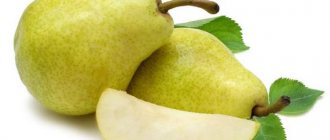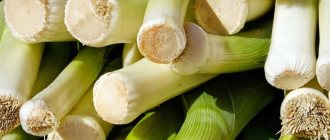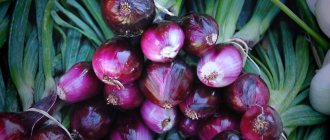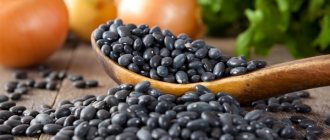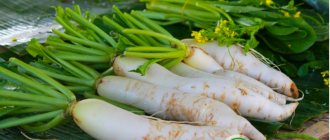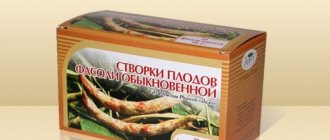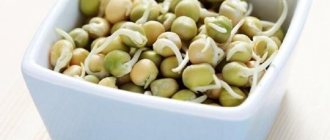Suvorov's onion, or Anzur (Allium suworowii), is an original early flowering crop that is grown by many gardeners. This wild plant is found in Altai and in the mountainous regions of Asia. But the ability of Suvorov’s onion to easily adapt to any climatic conditions made it possible to grow it in different regions of the country. The plant is valued for its early flowering along with tulips and daffodils, as well as for its beneficial properties for human health.
Suvorov's onion is an excellent honey plant
Are Suvorov's onions edible?
Anzur is an edible plant, but it can only be eaten during a certain period of time. The growing season of Suvorov onion begins in early spring, when the snow has not yet completely melted. It is at this time that the vitamin greens of the plant are valued, when the young leaves are distinguished by their juiciness and delicate consistency. They can be added to salads, sandwiches, soups, okroshka.
But the ripe Anzura onion cannot be eaten fresh, despite the high content of useful components in it. It can be eaten only after soaking and further processing.
In terms of vitamin C content, Suvorov onions are superior to onions
Subtleties of cultivation
Growing this type of onion is very easy if you follow simple rules and regularly care for the crop. So, Suvorov’s onion is grown by two methods: seed and vegetative. To simplify the growing process as much as possible, it is better to use the second option.
Suvorov onion cloves
Reproduction is carried out by multiplying daughter bulbs. It is best to plant in winter, so that in the spring you can enjoy an early and generous harvest. The bulbs are planted to a depth of about 10 cm according to a 20x30 cm pattern.
Further care for the crop is almost identical to caring for garlic. The first green shoots should be expected with the arrival of the first days of spring (even snow may still lie on the surface of the soil). Watering young sprouts should be moderate, if not rare, since Suvorov onions, like garlic, are very afraid of overly moist soil.
Don't forget about feeding the onions. Periodically add potassium fertilizer to the soil (this will help prevent yellowing and drying of the tips of the leaves). A couple of times a season (only after the first shoots appear) you can apply nitrogen-containing fertilizers. When the plant stops blooming and the greens dry out, you can dig up the onion heads and use them.
This concludes our consideration of the peculiarities of growing Suvorov’s onion, as well as its characteristics and applications. Good luck!
Useful properties and contraindications of Suvorov onion
Mountain onion Anzur has a rich chemical composition. The leaves and underground part of the plant contain a complex of vitamins, mineral components, and also include essential oils, sugars, alkaloids, and saponites.
Useful properties of the plant:
- strengthens the immune system;
- improves brain activity;
- increases the body's resistance to infections and bacteria;
- promotes the removal of sputum;
- has an anesthetic effect;
- enhances memory;
- activates metabolic processes;
- lowers blood sugar levels.
But Suvorov's onion should be used with caution, as it can cause allergies. Therefore, you can start introducing Anzur into your diet with a small amount, paying attention to the body’s reaction.
Other contraindications:
- heart disease;
- pregnancy;
- lactation;
- age up to 14 years;
- disruption of the digestive system.
Important! In terms of its effect on the human body, Suvorov's onion is compared to ginseng.
Nutritional composition
The main advantage of a representative of the flora is considered to be the ability to protect a person from scurvy. There is an opinion that it was with his help that Suvorov’s army was able to survive during the mass outbreak of this disease. Hence the corresponding name of one of the varieties.
Experts advise including canned onions in the winter diet, when the body especially needs nutritional supplements. It’s not for nothing that in ancient times the plant was equated with ginseng. Anzur has a beneficial effect on the processes of inhibition of aging. We are talking about improving vision and hearing in old age.
Those who often suffer from vertigo or have recently noticed that their memory has begun to deteriorate will enjoy the roll. For knowledge workers, students and retirees, the gifts of nature will help restore the lost balance of power.
Anzur's hidden trump card is called stimulation of the production of nonspecific immunity. Thanks to effective protection, a person can protect himself from various diseases that seriously undermine health.
Biologically active components that help cleanse the body are not only the above-mentioned vitamins, but also carotenoids. The composition offers an abundance of mineral salts, which traditional vitamin complexes usually do not include, or are added in minute quantities.
With regular use of properly made preservation, you can achieve a significant improvement in the functioning of the digestive system, as well as improve the condition of affected joints.
More fresh and relevant information about health on our Telegram channel. Subscribe: https://t.me/foodandhealthru
We will be grateful if you use the buttons:
Where is it used?
Anzur is widely used in ornamental gardening. Its huge ball-inflorescences, rising on long peduncles, can decorate any garden plot.
Suvorov's onion is also used in cooking. The leaves and underground part of the plant can be pickled, preserved and added to various dishes.
The beneficial properties of Anzur are widely used in folk medicine. Based on the plant, infusions, decoctions, lotions, and tinctures are prepared.
The healing properties of the plant are used for:
- glaucoma;
- respiratory diseases;
- hypertension;
- cold.
Important! The use of medicinal products based on Suvorov's onion is especially recommended for elderly people, as this allows them to solve many age-related health problems.
In Asia, Suvorov's onion is always added to pilaf
Description of Suvorov's bow
Anzur is a perennial crop of the Onion family. In one place, a plant can grow for up to 5-7 years without losing its decorative qualities. The culture looks good in group plantings.
Appearance
Suvorov's onion is characterized by belt-shaped leaves that form a basal rosette with a diameter of 40-50 cm, consisting of 4-6 pieces. The length of their plates reaches 20 cm and the width is about 4 cm. The shade of the leaves is green with a bluish tinge.
The giant ornamental onion has a root system that is a huge spherical bulb, the diameter of which is 3-10 cm, depending on the age of the plant. Root shoots extend from it, the function of which is to absorb nutrients and moisture from the soil.
The plant forms a tall peduncle that grows from the center of the basal rosette of leaves. Its height reaches 1-1.3 m. At the top, a spherical inflorescence of a purple hue is formed, consisting of small lily-shaped flowers, which can be seen in the photo of the giant onion. The budding period begins in the second half of May or early June.
After this, an ovary is formed. Suvorov onion seeds are in many ways similar to garlic. They ripen at the end of June. After this, the leaves and peduncle fade sharply.
Important! The dormant period for Suvorov's onion begins at the end of June and lasts until spring.
Ripening time and yield
Anzur is characterized by a rapid growth rate. Its growing season begins at a temperature of + 5 °C. And within 1-1.5 months the leaves grow and a peduncle forms. The bulbs are formed in the third year of planting the seeds. From one bush you can get 4-6 pieces. weighing 100-150 g. Fruit harvesting should be carried out at the end of June.
Young leaves of the plant are edible within 2-3 weeks
Disease resistance
Suvorov's onions can be affected by fungal diseases if growing conditions are inappropriate and are not properly cared for.
The most common of them are powdery mildew, fusarium, gray mold and rust.
Important! To avoid damage, it is recommended to carry out preventive treatment of the plant with Bordeaux mixture in early spring.
Green vegetable varieties
Aflatunsky
It got its name from the main place of its popularization, Aflatunsky Perval in Kyrgyzstan. In terms of external features, Aflatun onion differs from its relatives in having wider oval leaves and the presence of a short additional shoot.
An adult 4-6 year old dicotyledonous bulb of Aflatun onion is located under one common white scale. When dry, the scales acquire a silvery color. The oval elongated shape of the bulb ends with a toe. Weight is about 200 g. When planting, the onion lobes are separated and two new ones are obtained from each when ripe.
stalked
The bulbs of the stalked onion are smaller (4-7 cm), flat, round in shape. The color of the scales is brighter - from golden to dark yellow in juicy bulbs. Often adult bulbs have babies (2-3 pieces) attached to the mother's bed.
Suvorovsky
Important!
According to legend, Suvorov, during a difficult campaign through the Alps, in order to protect his army from scurvy, gave his soldiers juice from the leaves of this type of onion. In memory of this, the onion got its name.
The leaves of the Suvorov onion are wide, slightly pubescent, 35-40 cm long. The bulbs are 6-8 cm in diameter, round, with a small promontory at the top. There are usually no children. Scales are silvery-white.
Advantages and disadvantages
Suvorov's onion has a number of advantages, which is why many gardeners prefer to grow it in their garden. But the plant also has disadvantages that need to be taken into account.
At the beginning of the growing season, Suvorov's onions look like tulip seedlings
Main advantages:
- undemanding to growing conditions and care;
- high decorative qualities;
- early flowering;
- has healing properties;
- if you follow the rules, you can eat it;
- high winter hardiness;
- easy reproduction;
- rich chemical composition.
Disadvantages of culture:
- may cause allergies;
- short growing season;
- does not tolerate stagnant moisture;
- greens quickly become coarser;
- The bulbs must be soaked before use.
Planting Suvorov's onion
Anzur can be planted with seeds or bulbs. Each of these methods has its own characteristics that you need to pay attention to.
Growing from seeds
It is recommended to plant the seeds of the crop in the fall during the garlic planting period, since they need stratification for successful germination. To do this, it is recommended to make ridges 10-12 cm high to prevent getting wet during thaws. The optimal embedment depth is 2 cm.
Onion seeds germinate at the end of March, at the beginning of April, when the daytime temperature will confidently remain at +5 ° C. When the seedlings begin to dry out in June, they should be dug up and the bulbs should be dried well. In the fall, replant in the ground at a distance of 5 cm. Repeat the procedure for the third season, and already in the fourth year, Suvorov’s onion can be transferred to a permanent place.
Vegetative method
Planting can also be done using plant bulb segments. To do this, it is necessary to dig up Suvorov's onion in June, when the leaves begin to fade sharply. Then dry well and leave until autumn. After this, divide into cloves, like garlic, and plant immediately in a permanent place. In this case, marketable bulbs can be collected the following year.
Important! The best predecessors for Anzur are cabbage, potatoes, and cucumbers.
Use in cooking
The aromatic, spicy Suvorov onion is good as a seasoning for meat dishes (kebabs, pilaf). It gives the food a piquant, bright taste. In Uzbekistan, pickled vegetables are an essential component when preparing traditional rice and lamb pilaf.
The taste of pickled onion slices is vaguely reminiscent of the stalk of salted cabbage with a rich garlic aroma. Before salting and pickling, the onions are soaked for 30-40 days. Cold water is changed every day: morning and evening, adding a little salt. Small heads are pickled whole, large ones are first divided into slices.
Salted and pickled anzur arrows are delicious, consumed as an independent dish or as an addition to side dishes, meat, and salads.
Caring for Suvorov's onions
Suvorov's garlic onion does not require special attention from the grower. Water the plant only when there is no rain for a long time. To do this, use settled water.
Anzur responds well to feeding. At the beginning of the growing season, it is recommended to use nitrogen-containing fertilizers, such as urea or ammonium nitrate, at the rate of 30 g per 10 liters of water. During the period of flower stalk growth, the plant should be watered with an extract based on wood ash. To do this, you need to pour 200 g of the component with hot water and leave for a day. And then bring the total volume of liquid to 10 liters and water the Suvorov onion plantings.
At the end of flowering, it is recommended to fertilize the plant with 25 g of potassium sulphide and 30 g of superphosphate per bucket of water. This will allow Suvorov’s bow to regain strength and grow the bulb.
Throughout the entire growing season, the soil at the base of Anzur should be loosened. This is necessary to maintain air access to the roots and prevent moisture stagnation.
Anzur culture does not need insulation for the winter
